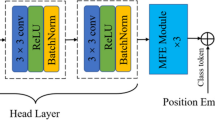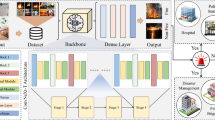Abstract
Fire is one of the most common hazards in the process industry. Timely and accurate fire detection is essential. The camera-based technics for fire detection are one of the promising technologies. However, its uncertainty of fire monitoring quality, such as noise artifacts within digital images caused by the inherent interference of hot environments, is always a key defect hindering the further application of this technology. Taking a simple fire scenario of the cable fire as an example, the noise reduction model (SA-DCGAN, Spatial Attention-Deep Convolution Generative Adversarial Network) is discussed for three kinds of typical fire image noise (white, black and mottled). Compared with traditional noise reduction algorithm, the model has greater advantages in restoring flame profile and texture. Through the verification process of applying this method in promoting fire detection based on image recognition, the effectiveness of the theoretical model is confirmed in improving the detection accuracy. It shows that the “True Detection” is increased by 375% and the “Missed Detection” and “False Detection” are decreased by 54% and 587%, respectively. These results show that the proposed theoretical model is of great significance for improving camera-based fire detection performance in thermal environments, which makes possible to further promote the intelligent fire protection in the process industry.












Similar content being viewed by others
References
Smoker K, Albinger R, Asme. Mitigation of fires in coal-handling facilities: continuous monitoring of carbon monoxide. In: ASME Power conference 2010. Chicago, IL, New York: Amer Soc Mechanical Engineers; 2010. p. 13–15
Zhang QJ, Xu JL, Xu L, Guo HF. Deep convolutional neural networks for forest fire detection. In: International forum on management, education and information technology application (IFMEITA). Guangzhou, Paris: Atlantis Press; 2016. p. 30–31
Li Y, Wang H, Bai K, Chen S. Dynamic intelligent risk assessment of hazardous chemical warehouse fire based on electrostatic discharge method and improved support vector machine. Process Saf Environ Prot. 2021;145:425–34. https://doi.org/10.1016/j.psep.2020.11.012.
Martinka J, Nečas A, Rantuch P. The recognition of selected burning liquids by convolutional neural networks under laboratory conditions. J Therm Anal Calorim. 2022;147(10):5787–99. https://doi.org/10.1007/s10973-021-10903-2.
Wu H, Wu D, Zhao J. An intelligent fire detection approach through cameras based on computer vision methods. Process Saf Environ Prot. 2019;127:245–56. https://doi.org/10.1016/j.psep.2019.05.016.
Wu SX, Zhang LB, IEEE. Using popular object detection methods for real time forest fire detection. In: 11th International symposium on computational intelligence and design (ISCID).; Hangzhou, NEW YORK: IEEE; 2018. p. 08–09.
Shen DQ, Chen X, Nguyen M, Yan WQ, IEEE. Flame detection using deep learning. In: 4th International conference on control, automation and robotics (ICCAR). Auckland, New Zealand: 2018; New York: IEEE; 2018. p. 20–23.
Li P, Zhao WD. Image fire detection algorithms based on convolutional neural networks. Case Stud Therm Eng. 2020;19:11. https://doi.org/10.1016/j.csite.2020.100625.
Fang W, Wang L, Ren PM. Tinier-YOLO: a real-time object detection method for constrained environments. IEEE Access. 2020;8:1935–44. https://doi.org/10.1109/access.2019.2961959.
Berthelon X, Chenegros G, Finateu T, Ieng SH, Benosman R. Effects of cooling on the SNR and contrast detection of a low-light event-based camera. IEEE Trans Biomed Circuits Syst. 2018;12(6):1467–74. https://doi.org/10.1109/tbcas.2018.2875202.
Goodfellow IJ, Pouget-Abadie J, Mirza M, Xu B, Warde-Farley D, Ozair S, et al. Generative adversarial networks. Adv Neural Inf Process Syst. 2014;3:2672–80.
Wang P, Zhang H, Patel VM, IEEE. Generative adversarial network-based restoration of speckled SAR images. In: 7th IEEE International workshop on computational advances in multi-sensor adaptive processing (CAMSAP). Curacao: NETH ANTILLES2017; 2017. p. 10–13.
Henz B, Gastal ESL, Oliveira MM. Synthesizing camera noise using generative adversarial networks. IEEE Trans Vis Comput Graph. 2021;27(3):2123–35. https://doi.org/10.1109/tvcg.2020.3012120.
Gajera B, Kapil SR, Ziaei D, Mangalagiri J, Siegel E, Chapman D. CT-Scan denoising using a charbonnier loss generative adversarial network. IEEE Access. 2021;9:84093–109. https://doi.org/10.1109/access.2021.3087424.
Qiang F, Ibarra-Castanedo C, Duan YX, Erazo-Aux J, Garrido I, Maldague X. Defect enhancement and image noise reduction analysis using partial least square-generative adversarial networks (PLS-GANs) in thermographic nondestructive evaluation. J Nondestruct Eval. 2021;40(4):26. https://doi.org/10.1007/s10921-021-00827-0.
Kerekes Z, Restás Á, Lublóy É. The effects causing the burning of plastic coatings of fire-resistant cables and its consequences. J Therm Anal Calorim. 2020;139(2):775–87. https://doi.org/10.1007/s10973-019-08526-9.
Isola P, Zhu JY, Zhou T, Efros AA. Image-to-image translation with conditional adversarial networks. In: Proceedings of the IEEE conference on computer vision and pattern recognition. Hawaii; 2017.
Li C, Zhao XY, Zhang ZX, Du SY. Generative adversarial dehaze mapping nets. Pattern Recognit Lett. 2019;119:238–44. https://doi.org/10.1016/j.patrec.2017.11.021.
Wang C, Meng Z, Xie R, Jiang X. A single image dehazing algorithm based on cycle-GAN. In: Proceedings of the 2019 international conference on robotics intelligent control and artificial intelligence. Shanghai: Association for Computing Machinery; 2019.
Kingma D, Ba J. Adam: a method for stochastic optimization. Computer Science. 2014.
Matsumoto M. Noise reduction with complex bilateral filter. J Acoust Soc Am. 2017;142(6):3486–96. https://doi.org/10.1121/1.5016807.
Chen T, Ma KK, Chen LH. Tri-state median filter for image denoising. IEEE Trans Image Process. 1999;8(12):1834–8. https://doi.org/10.1109/83.806630.
Kang SH, Kim JY. Application of fast non-local means algorithm for noise reduction using separable color channels in light microscopy images. Int J Environ Res Public Health. 2021;18(6):12. https://doi.org/10.3390/ijerph18062903.
Huang P, Chen M, Chen K, Zhang H, Yu L, Liu C. A combined real-time intelligent fire detection and forecasting approach through cameras based on computer vision method. Process Saf Environ Prot. 2022;164:629–38. https://doi.org/10.1016/j.psep.2022.06.037.
Acknowledgements
This work was supported by National Natural Science Foundation of China (NSFC, Grant No. 52006210) and the Opening Funds of State Key Laboratory of Fire Sciences (Grant No. HZ2022-KF05).
Author information
Authors and Affiliations
Contributions
MC contributed to software, data curation and writing—original draft preparation. KC contributed to investigation. CL contributed to validation. PH contributed to conceptualization and methodology. LY contributed to writing—reviewing and editing, supervision and funding acquisition.
Corresponding authors
Ethics declarations
Conflict of interest
No conflict of interest exists in the submission of this manuscript. I would like to declare on behalf of all the co-authors that the work described in this paper is an original research that has not been published previously, neither is it under consideration for publication elsewhere, in whole or in part. All the authors listed have approved the manuscript that is enclosed.
Additional information
Publisher's Note
Springer Nature remains neutral with regard to jurisdictional claims in published maps and institutional affiliations.
Rights and permissions
Springer Nature or its licensor (e.g. a society or other partner) holds exclusive rights to this article under a publishing agreement with the author(s) or other rightsholder(s); author self-archiving of the accepted manuscript version of this article is solely governed by the terms of such publishing agreement and applicable law.
About this article
Cite this article
Chen, M., Chen, K., Liu, C. et al. Theoretical and experimental study on image noise reduction for improving camera-based fire detection performance in thermal environments. J Therm Anal Calorim 148, 1191–1199 (2023). https://doi.org/10.1007/s10973-022-11794-7
Received:
Accepted:
Published:
Issue Date:
DOI: https://doi.org/10.1007/s10973-022-11794-7




